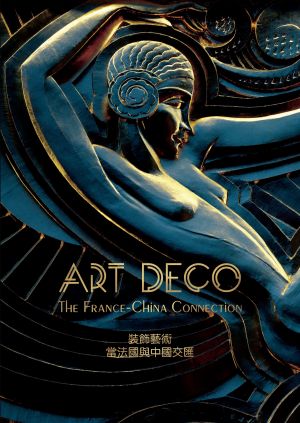Atlas of Maritime Buddhism
Product Name in original language
海上佛教地圖集
HKD490.00
In stock
The catalogue Atlas of Maritime Buddhism accompanies cutting-edge exhibition tracing the religion’s development along the Maritime route from India across Asia. Both the catalogue and the exhibition provide a dazzling visual immersion into major historic Buddhist sites. The catalogue documents through high resolution panoramic images the integration of virtual scenography, 3D stereoscopic visualizations, and physical sculptures in the actual exhibitions. In this manner, the Atlas of Maritime Buddhism presents a new approach to museology. The catalogue offers an in-depth visual journey of Buddhist art and architecture in its richly varied forms, as it flourished across Southeast Asia and China. The Atlas of Maritime Buddhism is a crucial reminder of the continued importance of the Silk Road, which stimulated economic, social, and cultural development across Asia, today revived in the Belt and Road initiative. Professor Jeffrey Shaw, Chair Professor of Media Art at CityU, and Professor Sarah Kenderdine, Professor of Digital Museology at the École polytechnique fédérale de Lausanne, are responsible for the original concept of the exhibition, and for the catalogue were joined by Dr. Marnie Feneley, Honorary Lecturer, University of New South Wales, Sydney, in realizing this ambitious project, initially developed at the Fo Guang Shan Buddha Museum, Kaohsiung, Taiwan.
海線佛教地圖集展覽,源自佛教海線絲鯛之路常設展覽,後者由莎拉·肯德丁教授(洛桑聯邦理工學院)與邵志飛教授(香港城市大學)共同為台灣佛光山佛陀紀念館構思與策劃,於2021年5月16 日開幕。佛光山一直推廣人間佛教,其歷史源遠流長,體現了精神價值與全球貿易之間的共生關係,此關係在海上貿易路線(公元前二世紀至公元十四世紀)的歷史尤為明顯,亦是本展覽的重心。本展覽通過壯麗的全景與半球形投影,展示從印度到中國的佛教建建築、藝術、學術和實踐。同時,展覽的創作人亦開發一系列多媒體技術和創新設計,為求讓觀眾接觸佛教豐富的文化遺產,以及理解佛教文化如何遇見、注入並敵發不同亞洲文化。透過與形形色色的民族和歷史互動,佛教的文化表達形式亦變得更為豐富。肯德丁教授與邵志飛教授以數年時間,穿梭亞洲各地,運用全景3D攝影、球形VR攝影和攝影測量的專用設備,紀錄豐富的文化資產,而在本此史無前例的展覽中,更加印證了這一點。創作者深深感謝如常法師(佛光山佛陀紀念館)與蘭卡斯特教授(電子文化地圖計劃)提供這次寶貴機會。
海線佛教地圖集展覽,源自佛教海線絲鯛之路常設展覽,後者由莎拉·肯德丁教授(洛桑聯邦理工學院)與邵志飛教授(香港城市大學)共同為台灣佛光山佛陀紀念館構思與策劃,於2021年5月16 日開幕。佛光山一直推廣人間佛教,其歷史源遠流長,體現了精神價值與全球貿易之間的共生關係,此關係在海上貿易路線(公元前二世紀至公元十四世紀)的歷史尤為明顯,亦是本展覽的重心。本展覽通過壯麗的全景與半球形投影,展示從印度到中國的佛教建建築、藝術、學術和實踐。同時,展覽的創作人亦開發一系列多媒體技術和創新設計,為求讓觀眾接觸佛教豐富的文化遺產,以及理解佛教文化如何遇見、注入並敵發不同亞洲文化。透過與形形色色的民族和歷史互動,佛教的文化表達形式亦變得更為豐富。肯德丁教授與邵志飛教授以數年時間,穿梭亞洲各地,運用全景3D攝影、球形VR攝影和攝影測量的專用設備,紀錄豐富的文化資產,而在本此史無前例的展覽中,更加印證了這一點。創作者深深感謝如常法師(佛光山佛陀紀念館)與蘭卡斯特教授(電子文化地圖計劃)提供這次寶貴機會。
ISBN
978-962-442-454-6
Pub. Date
Jul 1, 2021
Weight
1.6kg
Hardcover
248 pages
Dimension
290 x
250 mm
Subjects
Venerable Ru Chang
Director, Fo Guang Shan Buddha Museum, Kaohsiung, Taiwan
For most people, the term “Silk Road” refers to a network of overland trade routes connecting East and West, starting from Chang’an, in the east of Mainland China and running all the way to the Hexi Corridor in the northwest. It is generally much less known that the term “Silk Road” refers to both overland and maritime routes. These two routes extend far beyond our imagination and are not only important as historical trade routes, but also assist us greatly in our understanding of how Buddhism spread.
The maritime silk road did not leave a large number of heritage sites, unlike the overland silk road which left behind the famous Mogao Caves in Dunhuang for example. Therefore, as time went by, the maritime silk road was inevitably forgotten.
From the late 20th century on, however, more and more Buddhist scholars realized that the maritime silk road was no less important than the overland silk road, as they came to understand the spread of Buddhism from India to Mainland China. The maritime silk road has attracted a lot of attention in recent years and many international scholars are currently engaged in cooperative research. In 2011, before the opening of the Fo Guang Shan Buddha Museum, Venerable Master Hsing Yun expressed his deep desire to use technology in presenting multiple, permanent exhibitions at the museum. As a result, multiple galleries have been designed using interactive technology and multimedia. Examples include the Museum of Buddhist Festivals and the Life of the Buddha Museum.
These permanent exhibitions have become some of our most popular attractions, which have inspired museology scholars as well as the academic community from around the world. In 2021, the Buddha Museum will present the Buddhist Maritime Silk Road—New Media Art Exhibition. We will once again apply digital technology and new media to present the most recent discoveries of this maritime silk road. For this exhibition, we cordially invited: Professor Jeffrey Shaw, a visual artist and leading figure in new media and art, currently Chair Professor of Media Art at the City University of Hong Kong; Dr. Lewis R. Lancaster, a Buddhist scholar and Emeritus Professor at the University of California, Berkeley, USA; and Professor Sarah Kenderdine, Professor of Digital Museology at the École polytechnique fédérale de Lausanne (EPFL), Switzerland, to collaborate with us. This curatorial team of multinational researchers and academics as well as experts in archeology, digital imaging and media has created a groundbreaking presentation. It promises to set a new trend that will change exhibitions in museums, academia and even the Buddhist world!
現代人對「絲綢之路」的印象,通常談的就是東起中國長安,向西貫穿越過河西走廊,再通往西域的這條佛教藝術之路。事實上「絲綢之路」包含了陸路與海路,這兩條絲路延伸範圍之廣遠遠超過我們的想像,不僅是古代國際貿易的重要「商道」,也是佛教流佈傳播的重要「佛道」。
靠著舟船乘載航行的「海線絲綢之路」,自然無法像敦煌石窟、莫高窟等「陸上絲綢之路」般留下大量遺址,成為後人具體的研究場域,因此這條海上絲路便隨著時間的流逝逐漸為世人淡忘。
然而在二十世紀末至二十一世紀初,越來越多佛教研究學者在探討佛教從印度傳播到中國的途徑時,慢慢發現到這條絲路的重要性並不亞於陸路,於是「海線絲綢之路」在近年開始受到大家的高度矚目,也吸引了多位國際學者進行跨國的合作研究。
2011 年,佛光山佛陀紀念館在開館前,創辦人 星雲大師即指導,希望多使用科技與人互動。因此在佛館常設展中的「佛教節慶」、「佛陀一生」等便加入科技與多媒體的互動裝置,結合科技的展示手法,果然成為最具效益與最受歡迎的展館,進而使博物館界與學術界紛紛探討。
2021 年,於佛陀紀念館舉辦的「佛教海線絲綢之路 ─ 新媒體藝術特展」,我們將再次以數位科技結合新媒體的應用,帶大家重新認識這條佛教海上絲路。本次展出,特別邀請國際知名佛教學者,美國加州大學柏克萊分校榮譽教授蘭卡斯特先生、新媒體藝術先鋒香港城市大學邵志飛教授以及瑞士洛桑聯邦理工學院數位博物館學莎拉肯德丁教授,由我們四人共同策展。這次展覽不僅是佛教界的創舉,也是這項結合跨國學術研究、考古、數位影像、數位媒體等組成的策展團隊首次的成果展現,勢必將在博物館、學術界乃至佛教界再次掀起一股熱潮!
為讓觀眾對海線絲路有更進一步了解,策展團隊特地前往印度、 斯里蘭卡、緬甸、印尼、中國大陸、日本、韓國及台灣等亞洲佛教國度實地拍攝,希望透過展覽將佛教數位文化遺產的保存與展示提供典範,是佛教海上傳播的一次完整梳理,兼具文化、教育、歷史、 藝術與學術性。
星雲大師曾說:「現今社會成長迅速,科技發展一日千里, 『與時俱進』成為順應時代潮流的必然趨勢。」因此,佛光山相當重視數位科技、新媒體弘法等應用。因為有佛教的傳播與研究, 讓絲綢之路在幾千年後,不僅沒有淹沒在黃沙滾滾的大漠中,也沒有被波濤洶湧的巨浪所吞噬,更讓人類的文明發展與珍貴歷史得以保存。因此,弘法科技化,既非時尚亦非追隨流行,而是希望保存佛教歷史,透過研究與傳播,讓文化得以保存,這正是本次展覽重要的價值與意義,更是佛館在公共教育上的使命。
在佛館建館十週年慶,在佛光山宗委會的指導下,透過新媒體新科技重現佛教海線絲綢之路,意義深遠。最後,特別感謝家師星雲大師、趙元修與趙辜懷箴賢伉儷的支持鼓勵。同時也非常感謝共同舉辦本次展出的佛教經典電子化數位化、電子文化地圖(ECAI)的開創者蘭卡斯特教授、佛光山人間佛教研究院長妙凡院長及妙光法師,及香港城市大學邵志飛教授所帶領的新媒體藝術團隊,和佛館同仁們辛勞的共同努力。
佛陀紀念館十週年,為您策劃,衷心祝願您,吉祥歡喜。
Director, Fo Guang Shan Buddha Museum, Kaohsiung, Taiwan
For most people, the term “Silk Road” refers to a network of overland trade routes connecting East and West, starting from Chang’an, in the east of Mainland China and running all the way to the Hexi Corridor in the northwest. It is generally much less known that the term “Silk Road” refers to both overland and maritime routes. These two routes extend far beyond our imagination and are not only important as historical trade routes, but also assist us greatly in our understanding of how Buddhism spread.
The maritime silk road did not leave a large number of heritage sites, unlike the overland silk road which left behind the famous Mogao Caves in Dunhuang for example. Therefore, as time went by, the maritime silk road was inevitably forgotten.
From the late 20th century on, however, more and more Buddhist scholars realized that the maritime silk road was no less important than the overland silk road, as they came to understand the spread of Buddhism from India to Mainland China. The maritime silk road has attracted a lot of attention in recent years and many international scholars are currently engaged in cooperative research. In 2011, before the opening of the Fo Guang Shan Buddha Museum, Venerable Master Hsing Yun expressed his deep desire to use technology in presenting multiple, permanent exhibitions at the museum. As a result, multiple galleries have been designed using interactive technology and multimedia. Examples include the Museum of Buddhist Festivals and the Life of the Buddha Museum.
These permanent exhibitions have become some of our most popular attractions, which have inspired museology scholars as well as the academic community from around the world. In 2021, the Buddha Museum will present the Buddhist Maritime Silk Road—New Media Art Exhibition. We will once again apply digital technology and new media to present the most recent discoveries of this maritime silk road. For this exhibition, we cordially invited: Professor Jeffrey Shaw, a visual artist and leading figure in new media and art, currently Chair Professor of Media Art at the City University of Hong Kong; Dr. Lewis R. Lancaster, a Buddhist scholar and Emeritus Professor at the University of California, Berkeley, USA; and Professor Sarah Kenderdine, Professor of Digital Museology at the École polytechnique fédérale de Lausanne (EPFL), Switzerland, to collaborate with us. This curatorial team of multinational researchers and academics as well as experts in archeology, digital imaging and media has created a groundbreaking presentation. It promises to set a new trend that will change exhibitions in museums, academia and even the Buddhist world!
現代人對「絲綢之路」的印象,通常談的就是東起中國長安,向西貫穿越過河西走廊,再通往西域的這條佛教藝術之路。事實上「絲綢之路」包含了陸路與海路,這兩條絲路延伸範圍之廣遠遠超過我們的想像,不僅是古代國際貿易的重要「商道」,也是佛教流佈傳播的重要「佛道」。
靠著舟船乘載航行的「海線絲綢之路」,自然無法像敦煌石窟、莫高窟等「陸上絲綢之路」般留下大量遺址,成為後人具體的研究場域,因此這條海上絲路便隨著時間的流逝逐漸為世人淡忘。
然而在二十世紀末至二十一世紀初,越來越多佛教研究學者在探討佛教從印度傳播到中國的途徑時,慢慢發現到這條絲路的重要性並不亞於陸路,於是「海線絲綢之路」在近年開始受到大家的高度矚目,也吸引了多位國際學者進行跨國的合作研究。
2011 年,佛光山佛陀紀念館在開館前,創辦人 星雲大師即指導,希望多使用科技與人互動。因此在佛館常設展中的「佛教節慶」、「佛陀一生」等便加入科技與多媒體的互動裝置,結合科技的展示手法,果然成為最具效益與最受歡迎的展館,進而使博物館界與學術界紛紛探討。
2021 年,於佛陀紀念館舉辦的「佛教海線絲綢之路 ─ 新媒體藝術特展」,我們將再次以數位科技結合新媒體的應用,帶大家重新認識這條佛教海上絲路。本次展出,特別邀請國際知名佛教學者,美國加州大學柏克萊分校榮譽教授蘭卡斯特先生、新媒體藝術先鋒香港城市大學邵志飛教授以及瑞士洛桑聯邦理工學院數位博物館學莎拉肯德丁教授,由我們四人共同策展。這次展覽不僅是佛教界的創舉,也是這項結合跨國學術研究、考古、數位影像、數位媒體等組成的策展團隊首次的成果展現,勢必將在博物館、學術界乃至佛教界再次掀起一股熱潮!
為讓觀眾對海線絲路有更進一步了解,策展團隊特地前往印度、 斯里蘭卡、緬甸、印尼、中國大陸、日本、韓國及台灣等亞洲佛教國度實地拍攝,希望透過展覽將佛教數位文化遺產的保存與展示提供典範,是佛教海上傳播的一次完整梳理,兼具文化、教育、歷史、 藝術與學術性。
星雲大師曾說:「現今社會成長迅速,科技發展一日千里, 『與時俱進』成為順應時代潮流的必然趨勢。」因此,佛光山相當重視數位科技、新媒體弘法等應用。因為有佛教的傳播與研究, 讓絲綢之路在幾千年後,不僅沒有淹沒在黃沙滾滾的大漠中,也沒有被波濤洶湧的巨浪所吞噬,更讓人類的文明發展與珍貴歷史得以保存。因此,弘法科技化,既非時尚亦非追隨流行,而是希望保存佛教歷史,透過研究與傳播,讓文化得以保存,這正是本次展覽重要的價值與意義,更是佛館在公共教育上的使命。
在佛館建館十週年慶,在佛光山宗委會的指導下,透過新媒體新科技重現佛教海線絲綢之路,意義深遠。最後,特別感謝家師星雲大師、趙元修與趙辜懷箴賢伉儷的支持鼓勵。同時也非常感謝共同舉辦本次展出的佛教經典電子化數位化、電子文化地圖(ECAI)的開創者蘭卡斯特教授、佛光山人間佛教研究院長妙凡院長及妙光法師,及香港城市大學邵志飛教授所帶領的新媒體藝術團隊,和佛館同仁們辛勞的共同努力。
佛陀紀念館十週年,為您策劃,衷心祝願您,吉祥歡喜。
前言 Preface
簡介 Introduction
海上佛教記敍 Narratives of Maritime Buddhism
海上佛教地圖研究項目 — 莎拉· 肯德丁 The Atlas of Maritime Buddhism Research Project — Sarah Kenderdine
佛教文化交流 — 范娜驪 Buddhist Cultural Exchange — Marnie Feneley
佛教藝術品 — 范娜驪 Buddhist Artworks — Marnie Feneley
佛教遺址索引 Index of Buddhist sites
嗚謝 Credits




